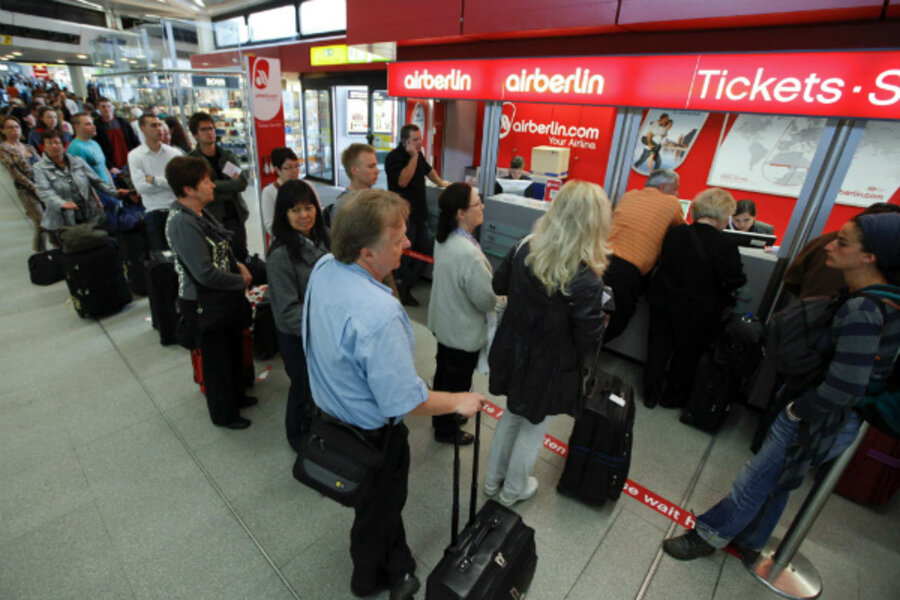Iceland's Bardarbunga volcano rumblings prompt orange alert
Loading...
Three days of earthquake activity at Iceland's Bardarbunga volcano prompted the country's meteorological office to issue an orange alert Monday for a heightened risk of eruption.
The volcano sits underneath Europe's largest glacier, raising concerns that an eruption would loft large amounts of steam and ash into the air as magma meets meltwater, disrupting air travel.
Recent eruptions in Iceland have had a long reach.
In May 2011, the most active volcano on the island, Grimsvötn, erupted, forcing airlines to cancel some 900 flights to and from Iceland, Britain, Greenland, Germany, Ireland, and Norway over a three-day period. The volcano sent plumes of ash up to seven miles high, overspreading air routes. Bardarbunga shares the same glacial skull cap sitting atop Grimsvötn.
The cancellations drew on lessons learned from an eruption in April 2010, after another under-ice Icelandic volcano, Eyjafjallajökull, became active. Its explosive eruption on April 14 of that year sent ash plumes into the sky that disrupted airline flights in northwestern Europe for six days.
Like Eyjafjallajökull, Grimsvötn is a stratovolcano, a class of volcanoes most prone to explosive eruptions. At 6,591 feet above sea level, it is Iceland's second highest mountain, with a caldera up to 10 miles wide and 2,300 feet deep.
According to the Iceland Meteorological Office, a swarm of earthquakes at the volcano began Aug. 16, and by Monday evening, seismographs had recorded some 2,600 earthquakes, including one that reached magnitude 4.5. Based on data from global-positioning-satellite receivers placed in the vicinity, the ground is being deformed as fresh magma works its way into the volcano at depth. But no signs have emerged yet of magma moving toward the surface.







